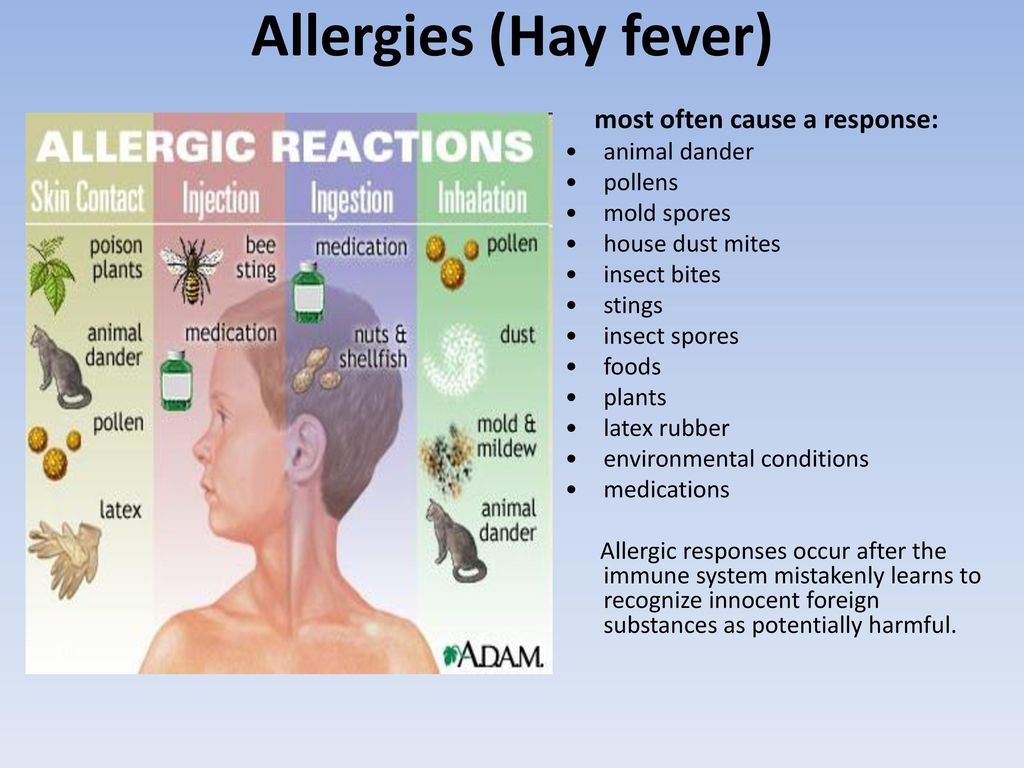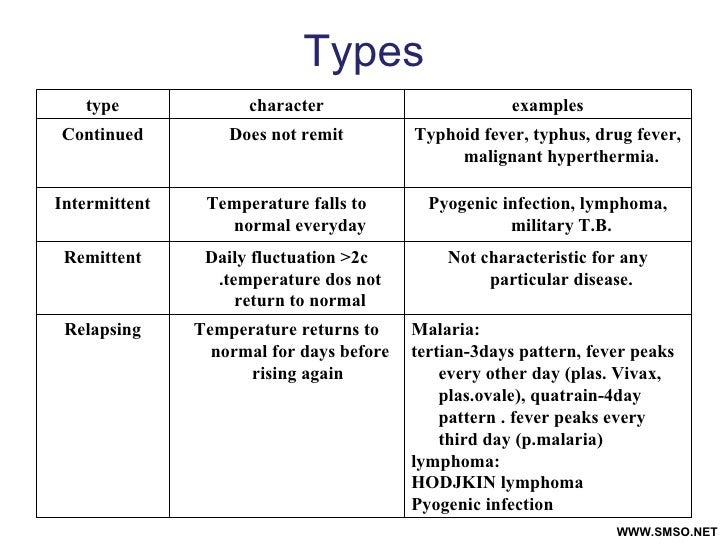107 Degrees Fever: Understanding High-Grade Fever and Effective Treatment Methods
What is hyperpyrexia and how does it differ from a regular fever. What are the main causes of extremely high body temperature. How can you effectively reduce a dangerous fever at home and when should you seek immediate medical attention.
Defining Hyperpyrexia: When Fever Becomes Life-Threatening
Hyperpyrexia is a severe medical condition characterized by an extremely high body temperature exceeding 106.7°F (41.5°C). This dangerous elevation in core temperature is typically caused by dysfunction in the hypothalamus, the brain’s temperature regulation center. Unlike standard fevers, hyperpyrexia poses significant risks to organ function and can be life-threatening if not promptly addressed.
To understand the gravity of hyperpyrexia, it’s crucial to differentiate it from normal fever ranges:
- Normal body temperature: 97°F to 100.4°F (36.5°C to 37.5°C)
- Fever (pyrexia): Above 100.4°F (37.5°C)
- Hyperpyrexia: Above 106.7°F (41.5°C)
Is hyperpyrexia the same as hyperthermia? No, these conditions are distinct. Hyperthermia occurs when external factors, such as high ambient temperatures, cause body temperature to rise without involving the hypothalamus. Hyperpyrexia, on the other hand, is an internal dysregulation of body temperature.

Recognizing the Symptoms: From Mild Discomfort to Severe Complications
The symptoms of hyperpyrexia can range from uncomfortable to life-threatening. As the condition progresses, the severity of symptoms typically increases. Recognizing these signs early can be crucial for timely intervention.
Initial Symptoms of Hyperpyrexia
- Extreme sweating
- Intense thirst
- Dizziness
- Muscle cramps
- Fatigue
- Nausea
- Light-headedness
Advancing Symptoms
If hyperpyrexia persists or worsens, more severe symptoms may manifest:
- Mild confusion
- Headache
- Contracted pupils
- Vomiting
- Diarrhea
- Reduced urine production
Critical Symptoms
Prolonged hyperpyrexia can lead to critical symptoms indicating severe physiological stress:
- Extreme confusion
- Loss of consciousness
- Dry, hot, red skin
- Widened pupils
- Seizures
- Rapid, shallow breathing
Can hyperpyrexia cause permanent damage? Yes, if left untreated, hyperpyrexia can lead to organ failure and ultimately death. This underscores the importance of immediate medical intervention when such high fevers occur.

Unraveling the Causes: From Infections to Medication Side Effects
Hyperpyrexia is not a standalone condition but rather a symptom of underlying health issues. Understanding its potential causes is crucial for proper diagnosis and treatment.
Infectious Causes
Infections are the most common triggers of hyperpyrexia. These can include:
- Bacterial infections
- Viral infections
- Parasitic infections (e.g., malaria)
Neurological Causes
Certain neurological conditions can disrupt the hypothalamus’ ability to regulate body temperature:
- Intracranial hemorrhage (bleeding in the brain)
- Stroke affecting the hypothalamus
Anesthesia-Related Hyperpyrexia
In rare cases, general anesthesia can trigger a dangerous condition called malignant hyperpyrexia, particularly in individuals with underlying muscle diseases. This condition is characterized by:
- Rapid, sustained increase in body temperature
- Metabolic acidosis
- Generalized muscular rigidity
How dangerous is malignant hyperpyrexia? It’s often fatal if not recognized and treated promptly, making it a critical concern for anesthesiologists and surgeons.

Endocrine Causes
Thyroid storm, a rare but severe complication of hyperthyroidism, can lead to hyperpyrexia by dramatically increasing metabolic rate and heat production.
Medication and Drug-Induced Hyperpyrexia
Certain medications and recreational drugs can interfere with temperature regulation, potentially causing hyperpyrexia:
- Selective Serotonin Reuptake Inhibitors (SSRIs)
- Antipsychotic medications
- Recreational drugs (e.g., ecstasy)
Diagnosis: Identifying Hyperpyrexia and Its Underlying Causes
Diagnosing hyperpyrexia involves more than just measuring body temperature. While a thermometer reading above 106.7°F (41.5°C) confirms hyperpyrexia, identifying the root cause is crucial for effective treatment.
Initial Assessment
Upon presentation with suspected hyperpyrexia, healthcare providers will typically:
- Measure core body temperature
- Assess vital signs
- Conduct a thorough physical examination
- Review medical history, including recent travel and medication use
Diagnostic Tests
To identify the underlying cause of hyperpyrexia, various tests may be ordered:

- Blood tests: To check for signs of infection, electrolyte imbalances, and organ function
- Thyroid function tests: To rule out thyroid storm
- Imaging studies: Such as CT or MRI scans to detect intracranial hemorrhage or other neurological issues
- Toxicology screens: If drug-induced hyperpyrexia is suspected
Why is rapid diagnosis crucial in cases of hyperpyrexia? Swift identification of the underlying cause allows for targeted treatment, potentially preventing severe complications and reducing the risk of mortality.
Emergency Management: Immediate Steps to Reduce Dangerous Fevers
Hyperpyrexia is a medical emergency requiring immediate intervention. While waiting for professional medical care, certain steps can be taken to help reduce the fever:
At-Home Fever Reduction Techniques
- Remove excess clothing to allow heat dissipation
- Apply cool, damp cloths to the skin or take a tepid bath
- Encourage fluid intake to prevent dehydration
- Use over-the-counter fever reducers like ibuprofen or acetaminophen (avoid aspirin in children and teenagers due to the risk of Reye’s syndrome)
Are ice baths recommended for hyperpyrexia? No, extreme cold can cause shivering, which may paradoxically increase body temperature. Tepid water is more effective and safer.

When to Seek Immediate Medical Attention
Call emergency services or go to the nearest emergency room if:
- Body temperature exceeds 103°F (39.4°C) and doesn’t respond to home treatment
- Severe symptoms like confusion, seizures, or loss of consciousness occur
- The person has a compromised immune system or other significant health conditions
Treatment Approaches: Tailoring Care to the Underlying Cause
The treatment of hyperpyrexia is multifaceted, focusing on both reducing the fever and addressing its root cause. The specific approach depends on the identified underlying condition.
Treating Infection-Induced Hyperpyrexia
For bacterial infections:
- Broad-spectrum antibiotics may be administered initially
- Once the specific pathogen is identified, targeted antibiotic therapy is employed
For viral infections:
- Antiviral medications may be prescribed if appropriate
- Supportive care to manage symptoms and prevent complications
For parasitic infections like malaria:
- Antimalarial drugs are administered based on the specific Plasmodium species
- Close monitoring for complications is essential
Managing Anesthesia-Related Hyperpyrexia
In cases of malignant hyperpyrexia:

- Immediate discontinuation of triggering anesthetic agents
- Administration of dantrolene, a specific antidote
- Aggressive cooling measures
- Correction of metabolic acidosis and electrolyte imbalances
How can future episodes of anesthesia-related hyperpyrexia be prevented? Patients with a history of this condition should inform all healthcare providers and consider genetic testing to identify susceptibility.
Treating Thyroid Storm
Management of thyroid storm involves:
- Administration of antithyroid drugs to block hormone production
- Beta-blockers to control heart rate and reduce peripheral conversion of thyroid hormones
- Corticosteroids to suppress the immune response and support adrenal function
- Cooling measures and supportive care
Addressing Drug-Induced Hyperpyrexia
Treatment typically includes:
- Immediate discontinuation of the offending drug
- Supportive care, including IV fluids and electrolyte management
- In cases of serotonin syndrome, administration of serotonin antagonists may be necessary
Long-Term Outlook: Recovery and Potential Complications
The prognosis for patients with hyperpyrexia largely depends on the speed of diagnosis, effectiveness of treatment, and the underlying cause. While many individuals recover fully with prompt and appropriate care, hyperpyrexia can lead to serious complications.

Potential Complications of Hyperpyrexia
- Neurological damage: High temperatures can cause brain damage, leading to cognitive impairment or seizures
- Organ failure: Prolonged hyperpyrexia can stress and potentially damage vital organs
- Rhabdomyolysis: Breakdown of muscle tissue, which can lead to kidney damage
- Disseminated intravascular coagulation (DIC): A blood clotting disorder that can cause excessive bleeding
Can the effects of hyperpyrexia be reversed? In many cases, with prompt treatment, the effects of hyperpyrexia can be mitigated. However, severe or prolonged cases may result in permanent damage.
Recovery Process
Recovery from hyperpyrexia involves:
- Close monitoring of vital signs and organ function
- Gradual return to normal activities as symptoms improve
- Follow-up care to address any lingering effects or complications
- In some cases, rehabilitation may be necessary to regain full function
Prevention Strategies
While not all cases of hyperpyrexia can be prevented, certain measures can reduce risk:

- Prompt treatment of infections
- Careful management of known thyroid disorders
- Awareness of medication side effects and interactions
- Genetic testing for those with a family history of malignant hyperthermia
Hyperpyrexia, characterized by dangerously high body temperatures above 106.7°F (41.5°C), is a medical emergency that requires immediate attention and specialized care. Understanding its causes, recognizing its symptoms, and knowing the appropriate first-aid measures can be life-saving. While the condition can lead to severe complications, prompt and appropriate treatment often results in full recovery. As medical knowledge advances, so too does our ability to manage and prevent this potentially life-threatening condition.
What is Hyperpyrexia? What are its causes, symptoms, and treatments?
Written by WebMD Editorial Contributors
- Causes of Hyperpyrexia
- How Hyperpyrexia Is Diagnosed
- How Hyperpyrexia Is Treated
Normal human body temperature ranges from 97 to 100.4 degrees Fahrenheit (36.5 to 37.5 degrees Celsius). Your body temperature changes during the day and varies throughout your lifetime. When your body temperature goes above 100.4 degrees Fahrenheit (37.5 degrees Celsius), you have a fever — also called pyrexia. So, a very high fever is called hyperpyrexia.
Hyperpyrexia is a condition where the body temperature goes above 106.7 degrees Fahrenheit (41.5 degrees Celsius) due to changes in the hypothalamus — the organ in the brain that regulates temperature.
Hyperpyrexia is a life-threatening emergency that demands urgent medical attention. Without prompt proper treatment, hyperpyrexia can lead to long-term complications and death.
Your body temperature can also increase due to external factors like a high ambient temperature. Your hypothalamus is not involved in such cases. This condition is called hyperthermia, not hyperpyrexia.
If you have hyperpyrexia, then you may also experience:
- Extreme sweating
- Thirst
- Dizziness
- Muscle cramps
- Fatigue
- Nausea
- Light-headedness
If your hyperpyrexia stays on for a long time or if it worsens, then you may show more severe symptoms like:
- Mild confusion
- Headache
- Contracted pupils
- Vomiting
- Diarrhea
- Reduced urine production
If hyperpyrexia is prolonged, then you may also show:
- Extreme confusion
- Loss of consciousness
- Dry, hot, red skin
- Widened pupils
- Seizures
- Rapid shallow breathing
If hyperpyrexia progresses further, it will ultimately lead to organ failure and death.
Hyperpyrexia is not a disease but a symptom of an underlying condition, and it can have many causes. Here are some of the causes:
Infections.Bacterial, parasitic, or viral infections are the most common cause of hyperpyrexia. Malaria, which is caused by protozoa, is also an important infectious cause of hyperpyrexia
Intracranial hemorrhage. Intracranial hemorrhage means bleeding in the brain, caused by trauma or stroke. This can affect your hypothalamus, which controls thermoregulation — i.e., body temperature control.
Anesthesia. Hyperpyrexia can occur as a side effect of general anesthesia. Hyperpyrexia due to anesthesia happens when there is an underlying muscle disease. This type of hyperpyrexia is called malignant hyperpyrexia. It is associated with a rapid, sustained increase in body temperature, metabolic acidosis, and generalized muscular rigidity. This condition is often fatal.
Thyroid storm. A thyroid storm is a rare condition where the body overproduces thyroid hormones. The excess hormones can disrupt the body’s temperature regulation and cause hyperpyrexia.
A thyroid storm is a rare condition where the body overproduces thyroid hormones. The excess hormones can disrupt the body’s temperature regulation and cause hyperpyrexia.
Some meds and drugs. Some medicines and drugs can also cause hyperpyrexia, these include:
- Selective serotonin reuptake inhibitors — or SSRIs
- Antipsychotics
- Recreational drugs like ecstasy
Hyperpyrexia is diagnosed using a thermometer. A temperature reading of 106.7 degrees Fahrenheit (41.5 degrees Celsius) or above indicates hyperpyrexia.
Hyperpyrexia always has an underlying cause, and finding this underlying cause is crucial, but sometimes challenging.
If you have hyperpyrexia, you must seek medical attention as soon as possible. To diagnose the cause of hyperpyrexia, your doctor will analyze your medical and travel history, check your physical condition, and run several tests. These tests may include:
- Blood tests — for signs of infection
- Thyroid function tests — for a thyroid storm
- Imaging studies — for intracranial hemorrhage
Depending on your history and presentation, your doctor may suggest further testing.
As an emergency requiring immediate medical attention, hyperpyrexia must not progress to avoid organ damage and death. While you wait for medical attention, do the following to treat the fever:
- Remove any tight or extra clothing.
- Sponge with tepid water or a cool bath.
- Replace fluids through drinking.
- Take medication like nonsteroidal anti-inflammatory drugs ( NSAIDs). Don’t give aspirin to children aged 19 years or below to avoid Reye’s syndrome.
Your doctor will decide on the treatment of hyperpyrexia depending on the underlying cause. If the cause is an infection, then your doctors will treat the infection. If it is caused by anesthesia, your doctor will stop the anesthesia and give you medication to control the fever. If you’ve ever had hyperpyrexia due to anesthesia, you should tell your doctor or anesthesiologist about it.
Any drug-related hyperpyrexia will need you to immediately discontinue taking the drug and receive supportive care. Hyperpyrexia due to a thyroid storm will require antithyroid drugs. Antipyretic medications like NSAIDs and corticosteroids are used to treat hyperpyrexia caused by intracranial hemorrhage.
Hyperpyrexia due to a thyroid storm will require antithyroid drugs. Antipyretic medications like NSAIDs and corticosteroids are used to treat hyperpyrexia caused by intracranial hemorrhage.
Top Picks
Treat High Fever in Children and Adults
- Online Care
- Scheduled Care
- Locations
- Careers
- Pay My Bill
- Testimonials
Eagan, Woodbury and Vadnais Heights
Contact UsCareersFAQsUR Blog
The Urgency Room is your comprehensive one-stop location for your urgent needs. Our standalone facilities are expertly outfitted with emergency trained providers and state-of-the-art equipment to handle the variety of aches, pains, breaks, and illnesses that come through our doors every day.
Our standalone facilities are expertly outfitted with emergency trained providers and state-of-the-art equipment to handle the variety of aches, pains, breaks, and illnesses that come through our doors every day.
Schedule an appointment at any of our three locations, open 365 days a year, including holidays, from 8:00 AM to 9:00 PM. Our telehealth services are available from 8:00 AM to 8:00 PM. Situated in Woodbury, Vadnais Heights, and Eagan, The Urgency Room is the quick and convenient alternative to overcrowded and understaffed emergency rooms for residents throughout the Twin Cities.
If you or your child has a high fever, don’t hesitate to seek care. Don’t drudge through hours of waiting at your typical emergency room. Instead, get evaluated and treated at your nearest Urgency Room, fast. With short wait times, friendly staff, and highly experienced providers, you’ll be back to yourself in no time.
What Is Considered a High Fever in Adults?
Most adults have a baseline temperature of 98. 6 F. Generally, temperatures of 103 degrees Fahrenheit or higher are considered high for an adult. However, when an adult sustains a temperature higher than 100 degrees Fahrenheit for an unusually long period of time, it could also be cause for concern. It’s best to act on the safe side and seek care at The Urgency Room right away. Fevers can be very complex and can stem from many different types of illnesses or infections. The providers at The Urgency Room can accurately assess and diagnose the source of your high fever.
6 F. Generally, temperatures of 103 degrees Fahrenheit or higher are considered high for an adult. However, when an adult sustains a temperature higher than 100 degrees Fahrenheit for an unusually long period of time, it could also be cause for concern. It’s best to act on the safe side and seek care at The Urgency Room right away. Fevers can be very complex and can stem from many different types of illnesses or infections. The providers at The Urgency Room can accurately assess and diagnose the source of your high fever.
Fevers occur when the hypothalamus, your body’s “thermostat,” increases your body’s temperature because of fever-producing substances called pyrogens. When pyrogens are released into your blood, you could wind up with a dangerously high fever. Pyrogens could come from bacteria, drugs, toxins, viruses, and fungi. The severity of fever and its detrimental results increase as your condition persists—which is why getting a high fever treated sooner is always your best option.
High Fever Thresholds
Once a fever goes beyond the high level, an adult enters dangerous fever levels (104 F – 107 F). This dangerous level, also known as hyperpyrexia, is considered a medical emergency and you should seek medical care immediately.
To give you a rough idea of the fever levels in adults, here’s a list:
- Low high fever: 100 F – 101 F
- Intermediate high fever: 102 F
- Serious high fever: 103 F – 104 F
- Hyperpyrexia: 104 F – 107 F
It is sometimes difficult to pinpoint the source of a fever as there are an incredible number of diseases and illnesses that have high temperatures as a side effect or symptom. And while fevers most frequently accompany a viral illness, our providers will try and get down to the exact source.
What Is Considered a High Fever in Children?
A high fever in a child may be any temperature higher than 100 degrees Fahrenheit, especially if that temperature is sustained above the 100-degree threshold for extended periods. If your child’s temperature is not showing signs of reducing, you should seek emergency care.
If your child’s temperature is not showing signs of reducing, you should seek emergency care.
The severity and damage a fever can cause vary by the age of the child. Younger children and infants should be seen by a medical provider sooner than an adult or teenager would with a similar temperature.
In addition to high or rising temperatures that last longer than 24 hours, a child with a high fever could have other obvious symptoms. Be on the lookout for severe diarrhea, dehydration, repeated vomiting, seizures, or rash. Your child is especially susceptible to serious infections if they have any type of immune disorder or haven’t received immunizations.
When minutes matter, especially if your child has a high fever, get to your nearest Urgency Room—we have shorter wait times and state-of-the-art equipment to treat your illness fast.
When Is It Time to Seek Care?
As listed above, the duration one with a high fever should wait to seek medical treatment varies depending on age. An infant should be seen right away even if it has temperatures constituting a low fever in adults. Similarly, an adult can wait until the fever persists for a day or two while a child, depending on its age, should be seen as soon as they’ve had a fever of any temperature for longer than 24 hours.
An infant should be seen right away even if it has temperatures constituting a low fever in adults. Similarly, an adult can wait until the fever persists for a day or two while a child, depending on its age, should be seen as soon as they’ve had a fever of any temperature for longer than 24 hours.
You may try fever-reducing medicines (ones containing acetaminophen) before seeking medical care, however, always consult with a medical provider if you are uncertain what medicine to administer for your child.
Consider Using Telehealth for Less Intense Fevers
If you’re not experiencing a medical emergency but you’re concerned about your fever level or that of your child, consider using online care services. The Urgency Room utilizes video technology for patient convenience and overall experience improvement. You won’t have to waste precious time in your vehicle or using public transportation, not to mention waiting in the lobby. Just follow the instructions on our Online Care page.
How Can The Urgency Room Treat High Fevers in Adults and Children?
The Urgency Room is well-equipped to take care of you or your child when experiencing a high fever. Prolonged fever or dangerously high fevers can cause an onslaught of residual health problems, so it is always best to seek care rather than ignore the problem.
All three Urgency Room locations are equipped with providers and staff who have extensive emergency room experience as well as equipment to assess, diagnose and treat your illness or injury.
Up-to-date technology at our Urgency Room locations includes:
- X-ray machines
- CT scanner
- Ultrasound
- High-complexity lab
- Sedation for adults and children
The Urgency Room also has a large library of at-home aftercare videos for you to reference after you’ve left our in-person care. Before, during, and after illness, The Urgency Room has your well-being as our first priority.
Medical Care for a Wide Range of Symptoms, Available In-Person or Online
Looking for fast, trusted medical care in the Twin Cities? The Urgency Room can help you avoid the crowds and long waits of typical emergency rooms. Our facilities are owned and operated by members of the Emergency Physicians Professional Association. Our board-certified physicians and staff are here for you when you need medical care the most.
Our facilities are owned and operated by members of the Emergency Physicians Professional Association. Our board-certified physicians and staff are here for you when you need medical care the most.
We’ll always provide you with exceptional medical care closer to home. Schedule your non-emergent visits or log in online to start a visit with one of our providers online.
Temperature suicide: why modern motors are doomed to overheat
- Main
- Articles
- Temperature suicide: why modern motors are doomed to overheat
Author:
Boris Ignashin
Boiling antifreeze in the radiator, steam, temperature needle in the red zone – the symptoms of overheating of the engine and its consequences in the form of a warped cylinder head, we seem to know everything very well. The reasons have also been known for a long time – clogging of the cooling system, a “dead” thermostat … But that was 20 years ago. Today, modern motors are doomed by their creators to constantly work on the verge of overheating, and the driver, as a rule, finds out about this when it is too late. Today we understand how it happened, and what is “regular overheating”.
The reasons have also been known for a long time – clogging of the cooling system, a “dead” thermostat … But that was 20 years ago. Today, modern motors are doomed by their creators to constantly work on the verge of overheating, and the driver, as a rule, finds out about this when it is too late. Today we understand how it happened, and what is “regular overheating”.
About operating temperature
Every motor has an operating temperature, and only when it is reached does it work correctly. After “warming up”, the injection control system, lubrication system, timing system and other engine subsystems begin to work as efficiently as possible.
What should be the operating temperature? It is usually in a narrow range of 75 to 105 degrees for almost all motor designs. True, in recent years, in order to achieve marketing indicators of efficiency and environmental friendliness, motors are increasingly forced to work at elevated temperatures from 115 to 130 degrees.
This is only good for marketers, who report year after year that cars have become even a little faster and “cleaner”. An increase in operating temperature has an extremely negative effect on the resource of motors, because 120 or 130 degrees is too much both for rubber and plastic elements of attachments, and for the condition of the piston group.
The erudite reader will notice that 120-130 degrees is the idle temperature, and on the go it usually drops to an acceptable 85-90. Which, of course, makes life easier for the engine, but for the time being.
Let’s take a closer look at the problem below, but for now let’s study how modern engines are cooled (spoiler: not at all like your first rear-wheel drive or front-wheel drive VAZ).
How do modern cooling systems work?
They are much more complicated than those introduced in driving school lessons. So, all the new machines currently being sold use a cooling system with several fan speeds for blowing the radiator, or even several fans with several operating modes. And the system is controlled not by simple thermal switches, but through an electronic control unit, depending on the speed, load, operating mode of the air conditioner and many other factors.
And the system is controlled not by simple thermal switches, but through an electronic control unit, depending on the speed, load, operating mode of the air conditioner and many other factors.
Almost all machines use an adjustable thermostat, which has two operating ranges due to the heating element. On some machines, there is no thermostat at all – it has been replaced with an electronically controlled spool valve module. Many premium cars have an “air thermostat” – electrically operated shutters that improve the car’s aerodynamics at high speeds.
When it comes to water pumps, the simple crankshaft-driven pump is by far the most common, but there are designs with a variable drive or even an electric pump drive.
Such an important and yet complex system must be controlled. Most vehicles have an overheat warning light and
engine temperature gauge. Almost all car owners consider it a sufficient condition for the absence of overheating that the pointer is in the permissible zone, usually “green” or “yellow”, and that the alarm system does not signal overheating or lack of antifreeze.
But the control system is also controlled by electronics, and tries not to “strain” the car owner with “excessive” information about the operation of the car. So, almost always the dial indicator and even digital temperature indicators do not reflect true indicators.
The needle will show the same “about 90” both at a temperature of 85 and at a temperature of 125. During the operation of the car, the arrow can stand dead in place, although the engine will warm up much more when working in traffic jams than when driving on the highway. And only with real overheating, usually when temperatures rise to 130-150 degrees, the arrow will move, just before the alarm indicator goes off.
The only reliable way to control is to check the operating temperature using scanners, after OBD-II interface or another way to access the service information of the engine control unit.
What is “regular overheating”
As you have already understood, the “regular” operation of the cooling system is now a very conditional concept. Even in the absence of flashing red lights on the dashboard, the temperature may already be far from optimal. For example, BMW gasoline engines are tuned to work at temperatures of 115-125 degrees, and the actual operating temperature can be even higher, and without any errors.
Even in the absence of flashing red lights on the dashboard, the temperature may already be far from optimal. For example, BMW gasoline engines are tuned to work at temperatures of 115-125 degrees, and the actual operating temperature can be even higher, and without any errors.
Yes, and in much simpler Opel and VW engines, they warm up to 115-120 degrees quite regularly. From such temperatures it is not far from “real” overheating, because the cooling systems are constantly under pressure and work at the limit. The slightest change in parameters or loss of tightness will immediately lead to a more serious breakdown.
Modern machines have a problem called “normal overheating”. This is when the control system cannot reduce the engine temperature to the optimum for this driving mode, despite the use of all possibilities, but the temperature is still less than the “emergency” temperature when the emergency sensor is triggered and the cooling system cannot withstand the pressure.
In some cases, there is a local increase in the temperature of a part of the motor above the design maximum. Despite the seeming “frivolity” of such a malfunction, it nevertheless quickly destroys the engine, and the driver of the car may not even be aware of the cause of all the troubles.
Most vehicles with a controlled cooling system over three years old are affected to some extent by this defect. At the same time, it is difficult for a non-professional to notice deviations in the operation of the engine. After all, the temperature indicator firmly indicates the “norm”, and the fact that the car drives a little worse, that the air conditioner cools worse, that fuel consumption is growing and oil is gradually being consumed, most of the drivers will not notice.
By the way, a visit to the service here, most likely, will not help, because in the error logs, most likely, it will be empty. But the discrepancy between the desired and actual operating temperature in the meantime is up to 30-40 degrees. These kinds of problems are simply inherent in the design of modern European cars. For the sake of the indicators of environmental friendliness and economy already mentioned above, they are “obliged” to warm up to 120-130 degrees at idle. This is too much for work under load, but for standing still in a traffic jam, it is quite acceptable. But here you are moving away, and even want to “grab”. Instantly drop the temperature to the optimal “running” 85-90 degrees is impossible, so the motor will spin at very dangerous temperatures for some time.
These kinds of problems are simply inherent in the design of modern European cars. For the sake of the indicators of environmental friendliness and economy already mentioned above, they are “obliged” to warm up to 120-130 degrees at idle. This is too much for work under load, but for standing still in a traffic jam, it is quite acceptable. But here you are moving away, and even want to “grab”. Instantly drop the temperature to the optimal “running” 85-90 degrees is impossible, so the motor will spin at very dangerous temperatures for some time.
As a consequence – detonation, damage to the pistons and chipping of the coatings of cylinder liners on “all-aluminum” engines. And also low oil pressure, which means scuffing and sticking. And the temperature of the piston and piston rings under load rises sharply, and the oil cokes. And with age, the problem grows, because due to dirty radiators, pump belt slippage, deterioration of heat transfer from the walls of the cylinder head, aging of the cooling system fans and voltage drops, the engine operating temperature gradually ceases to decrease from “idle” 130 to “running” 90 even during prolonged operation under load.
Thus, the “maximum operating” temperature becomes simply “operating”, and the emergency operation becomes standard for the engine, with all the ensuing consequences.
Cars that spend a lot of time in traffic jams are especially bad. Their cooling system runs at its highest temperature most of the time, and motors don’t usually last long. A few years later, the car becomes disabled. With an engine that confidently consumes liters of oil, with idle catalysts and half the power of the regular one. Yes, and “automatic” boxes get no less, because they are usually cooled through a heat exchanger, which means that the oil temperature in them is even higher than the temperature in the engine cooling system.
Abnormal overheating and death of the engine
“Classic” overheating with puffs of steam from under the hood, wedged engine and other fatal consequences although it is often the culmination of such a “normal overheating”, it is much less common.
If you stop the engine in time, then, most likely, serious problems can be avoided. Otherwise, you can already start choosing between a “contract” engine, repairing the remains of the old one or buying a new one. After all, warping of the cylinder head, violation of the geometry of the cylinder block and violation of the thread of the cylinder head bolts, scuffing of liners and pistons are only a small part of the malfunctions that occur during severe overheating and loss of antifreeze.
The nominal cause of this trouble is usually a fluid leak from the cooling system. After that, the temperature of various engine components and the temperature gradient between its various elements rises, causing hardware breakdowns.
The true causes usually lie in “normal overheating” for a long time, aging of the materials of the cooling system, gradual degradation of the radiator capabilities, failure of the pump or its drive. Fortunately for many car owners, serious malfunctions manifest themselves in advance, for example, at the next maintenance, or by triggering antifreeze level sensors before a strong leak in the cooling system and an emergency overheating light under load.
And what to do?
If you have a modern car whose mileage has already exceeded 50,000, but you are going to drive it happily ever after (or maybe even bought a used version with 100+ mileage), then you will need tips on how to rid your car of normal overheating.
In the next part of the article, we will talk about the optimal driving mode and some engine design improvements that will help avoid overheating and have an extremely positive effect on its resource.
practice
New articles
Articles / Interesting
5 reasons to buy and not to buy Kia Rio III
Kia Rio III did not accidentally hit the top lines of the car sales rating in Russia. This model, on the one hand, is quite modest and inexpensive, and on the other hand, it is well-equipped and reliable…
965
3
0
07/02/2023
Articles / Tests
Three Letters: Guess the car with the three letter abbreviation in the name
Once we already suggested that you recognize a car by its nickname or a description of its emblem, and now we’ll go from the “official”, but no less complex and interesting side. Here are a dozen questions…
Here are a dozen questions…
617
0
0
07/01/2023
Articles / New cars
Business class in Chinese: first acquaintance with Chery Arrizo 8
There are different ways to relate to the processes that are taking place today in the Russian automotive market. One thing is certain: Chinese brands confidently, one by one, occupy niches, free…
852
2
0
06/30/2023
Popular test drives
Test drives / Test drive
Test drive Geely Monjaro: better than Volvo?
In China, this full-size crossover debuted two years ago under the dissonant name Xingyue L and factory index KX11. In Russia, the car was certified in 2022, and in …
In Russia, the car was certified in 2022, and in …
17390
8
907.04.2023
Test drives / Test drive
Nappa, lockdowns and tank reversal: test drive the Tank 300 off-road vehicle
Mountainous Khakassia, Chests massif. A steep ascent and a rut with deep gullies leading to the summit. It seems that it will be difficult – after all, in each such scour, the car hits a diagonal…
10347
14
4
03/02/2023
Test drives / Test drive
Love according to instructions: test drive GAZ Sobol NN
Sable NN waited a long time. GAZelle NEXT appeared – but there is no Sable NEXT. GAZelle NN came out – but Sable NN is not visible. It seems that there are not so many differences between the GAZelle and the Sable, it would be possible to build it …
GAZelle NN came out – but Sable NN is not visible. It seems that there are not so many differences between the GAZelle and the Sable, it would be possible to build it …
8501
1
1457
03.03.2023
Attention, temperature! Practice …: bmwservice – LiveJournal
One of the important parameters of the engine’s life, to which I constantly draw attention, is the operating temperature. Much has been said here in the past about this. Measures to optimize the thermal regime are obvious, today I will tell you what exactly I managed to do using the example of my particular car. And it’s somehow strange when you theorize about the terrible 115 degrees of coolant and 120-130C of oil (owners of the BMW N46 and N63 and many others), but I myself kind of hide it. You never know, maybe I have even more)
So, what do I advise, if it is structurally possible (in my case, almost everything possible is just possible):
1. Washing radiators, including oil – ideal if once a season. Here, I think, everything is clear and without comments.
Washing radiators, including oil – ideal if once a season. Here, I think, everything is clear and without comments.
2.Setting a low temperature control mode (in simple cars – it is solved simply by setting a “cold” thermostat). My regular catalyst “95” was replaced by “80”. This is a very big difference.
3. Installation of a main pump with improved performance, or a “cold” pulley of a smaller diameter, which increases the speed of the pump. I have a “hot climate” pulley installed.
The pump is spinning faster. The circulation is better.
4.Installation of an additional electric pump of greater capacity – a pump of greater capacity has been installed. Works constantly. Additionally improves circulation at idle.
5.Installation of an air conditioner fan of improved design – a fairly powerful fan with a large number of blades was found. Works constantly. Especially useful in summer, of course.
6. Use of antifreeze additives that improve circulation (prevent cavitation phenomena near the pump impeller). Like Motul MoCool. Type easy “tuning” of antifreeze.
Like Motul MoCool. Type easy “tuning” of antifreeze.
7. In the summer I try to ride on the water, although this is not so necessary – I just did it as an experiment. I still manage to snatch a couple of degrees …
The results are as follows:
In the traffic jam-city mode, the coolant temperature fluctuates in the range of 84-86 degrees, in the summer I saw 88-89, but then not everything was done, but it is unlikely to be higher .
On the highway, you can reach the level of 82-83 degrees, if you keep cruising speed and low speed…0110
And so in dynamics:
The situation with oil is much more interesting. While driving without any “tuning” with a hot thermostat and the coolant temperature reached typical BMW-shnyh 105-107 degrees and above, I did not measure the oil temperature. I don’t know what she was then. Expectedly worse than now. Now I made a number of measurements in different winter-summer conditions. Measured with a mercury laboratory thermometer when sampling in the laboratory. I also measured with a thermocouple in the crankcase. And in a traffic jam and after annealing along the Moscow Ring Road. Always approximately these numbers are obtained:
I also measured with a thermocouple in the crankcase. And in a traffic jam and after annealing along the Moscow Ring Road. Always approximately these numbers are obtained:
Or:
The median is around 65 degrees Celsius, I guess.
In total, now the engine operating conditions (coolant temperature) are close to optimal-ideal for operation 85-90 C. In this case, you can safely drive the 95th.
In general, a heaven is created for engine oil in the crankcase – constantly no more than 65 degrees and as much as 8 liters in the crankcase …
I don’t know below, is it real? And is it necessary? Let me remind you that every 10 degrees after a temperature of 70C double the rate of chemical reactions.
I have not even overcome this conditional threshold. And certainly not to compare with the “heavy” versions of engines such as N46, N63 and so on, where the oil in the cork boils far beyond 120 degrees sometimes.
Or so. In other words, almost all modern engines sometimes exceed 100.
